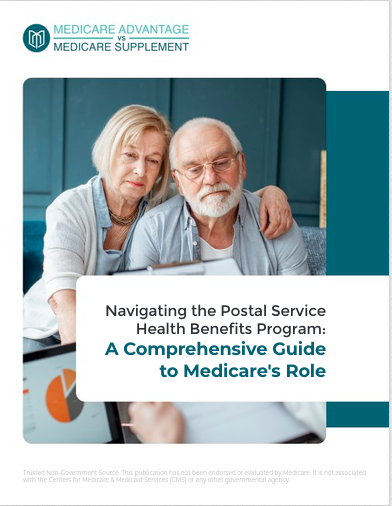Key Takeaways
-
Medicare Part D rules in 2025 continue to cause confusion even among those already enrolled, especially around cost-sharing, coverage stages, and enrollment deadlines.
-
Understanding how the deductible, initial coverage, and catastrophic phases interact with the new $2,000 out-of-pocket cap can help you avoid unpleasant billing surprises.
Why So Many People Struggle with Medicare Part D
You might assume that once you’re enrolled in Medicare Part D, the hard part is over. Unfortunately, the reality is often far more complex. In 2025, many enrollees are still puzzled by the mechanics of how their prescription drug coverage actually works. This confusion can lead to unexpected costs, missed deadlines, and coverage lapses.
The reasons are many—layered benefit phases, evolving rules, and the interplay between Medicare and other forms of coverage. Even long-time enrollees find themselves surprised when costs spike mid-year or coverage rules change.
The Four Phases of Part D: Still Confusing in 2025
Medicare Part D continues to operate on a four-phase structure in 2025. Knowing what each phase means and when it applies is key to avoiding billing surprises.
1. Deductible Phase
-
In 2025, the standard deductible is $590.
-
You pay the full cost of your prescriptions until you meet this deductible.
-
Some plans may waive the deductible for lower-tier drugs, but this varies.
2. Initial Coverage Phase
-
After reaching the deductible, you enter this phase.
-
You share the cost with your plan through copayments or coinsurance.
-
This phase continues until your total drug spending (yours and the plan’s) reaches $5,030.
3. Catastrophic Phase (Now Changed in 2025)
-
In previous years, enrollees had to continue paying a small portion of their drug costs even in this phase.
-
As of 2025, the $2,000 out-of-pocket maximum means once your spending hits this cap, your plan covers 100% of covered drug costs for the rest of the year.
-
This replaces the older catastrophic structure.
4. Coverage Gap (Donut Hole) Eliminated
-
The infamous “donut hole” is gone as of 2025.
-
Now, once you hit the $2,000 out-of-pocket cap, you move straight into full coverage with no further cost-sharing for covered drugs.
Enrollment Periods You Can’t Afford to Miss
Missing your Part D enrollment window can result in late penalties and gaps in coverage. Here’s what to keep in mind for 2025.
Initial Enrollment Period (IEP)
-
Lasts for 7 months: 3 months before, the month of, and 3 months after you turn 65.
-
If you enroll late without other creditable drug coverage, you may pay a permanent late enrollment penalty.
Annual Enrollment Period (AEP)
-
Runs from October 15 to December 7 each year.
-
You can switch, join, or drop a Part D plan.
-
Changes take effect January 1 of the following year.
Medicare Advantage Open Enrollment (if applicable)
-
January 1 to March 31.
-
You can switch from one Advantage plan to another or drop Part C and go back to Original Medicare, with or without Part D.
Special Enrollment Periods (SEPs)
-
Triggered by life events: moving, losing employer coverage, or qualifying for Medicaid.
-
You typically have 2 months from the event to make changes.
New Payment Flexibility in 2025
One of the most welcome changes in 2025 is the Medicare Prescription Payment Plan:
-
You can spread your drug costs over the calendar year instead of paying them all at once.
-
Monthly installments are based on projected out-of-pocket costs.
-
Helps avoid large spikes in prescription expenses early in the year.
This payment smoothing feature helps reduce financial stress, particularly for high-cost medications or multiple prescriptions.
Common Sources of Confusion in 2025
Even with the updates, several areas still confuse enrollees. Here are the top culprits:
Tiered Drug Formularies
-
Not all medications are covered equally.
-
Higher-tier drugs usually cost more and may require prior authorization.
Network Pharmacies and Preferred Pharmacies
-
Using a pharmacy outside your plan’s network can result in higher costs or denied claims.
-
Preferred pharmacies often offer lower copays than standard in-network ones.
Prior Authorization and Step Therapy
-
Certain drugs require pre-approval or trying cheaper alternatives first.
-
These rules vary widely by plan and can delay access to needed medications.
Coordination with Other Coverage
-
If you have retiree drug coverage or Veterans Affairs benefits, Part D may work differently.
-
It’s important to coordinate benefits to avoid penalties or duplicate coverage.
What Happens If You Don’t Enroll on Time
If you go without creditable prescription drug coverage for 63 days or more after your Initial Enrollment Period, you’ll face a late enrollment penalty:
-
The penalty is 1% of the national base beneficiary premium for each full month you’re late.
-
This penalty is added to your monthly premium for as long as you have Part D.
Creditable coverage includes most employer or union plans and TRICARE, but always confirm.
Coverage Isn’t Always Automatic
You aren’t automatically enrolled in a Part D plan unless you’re receiving Extra Help. Otherwise, you need to actively enroll, even if you’re already in Medicare Part A and/or Part B.
Why It’s More Important Than Ever to Review Your Plan Annually
Plans change every year, and what worked for you in 2024 might not work in 2025. Each fall, you receive an Annual Notice of Change (ANOC), which details upcoming changes in:
-
Deductibles
-
Copayments
-
Covered drugs
Reviewing your ANOC during the Annual Enrollment Period can prevent costly surprises.
How Medicare Part D Coordinates with Medicare Advantage
If you’re enrolled in a Medicare Advantage Plan (Part C), your drug coverage is usually built-in. But:
-
You can’t enroll in a separate Part D plan unless you leave your Advantage plan.
-
Some Advantage plans don’t include drug coverage, which means you’ll need to choose Original Medicare and a standalone Part D plan instead.
Understanding Extra Help in 2025
The Extra Help program offers assistance to those with limited income and resources:
-
Reduces or eliminates premiums, deductibles, and copayments.
-
Automatically enrolls eligible individuals into a Part D plan.
-
Eligibility levels adjust annually, so rechecking your status each year is a good idea.
Don’t Skip the Details—They Matter
Medicare Part D may seem straightforward on the surface, but as you’ve seen, it’s packed with nuanced rules, deadlines, and exceptions. Every detail—from enrollment timelines to cost-sharing structures—can significantly affect your wallet.
Take Control of Your Medicare Drug Coverage
The 2025 updates to Medicare Part D are designed to make your prescription drug coverage simpler and more affordable, but only if you understand how the system works. Don’t let hidden rules or missed deadlines trip you up.
If you’re unsure which path is right for you, get in touch with a licensed insurance agent listed on this website. They can help you compare options and clarify your next steps.









